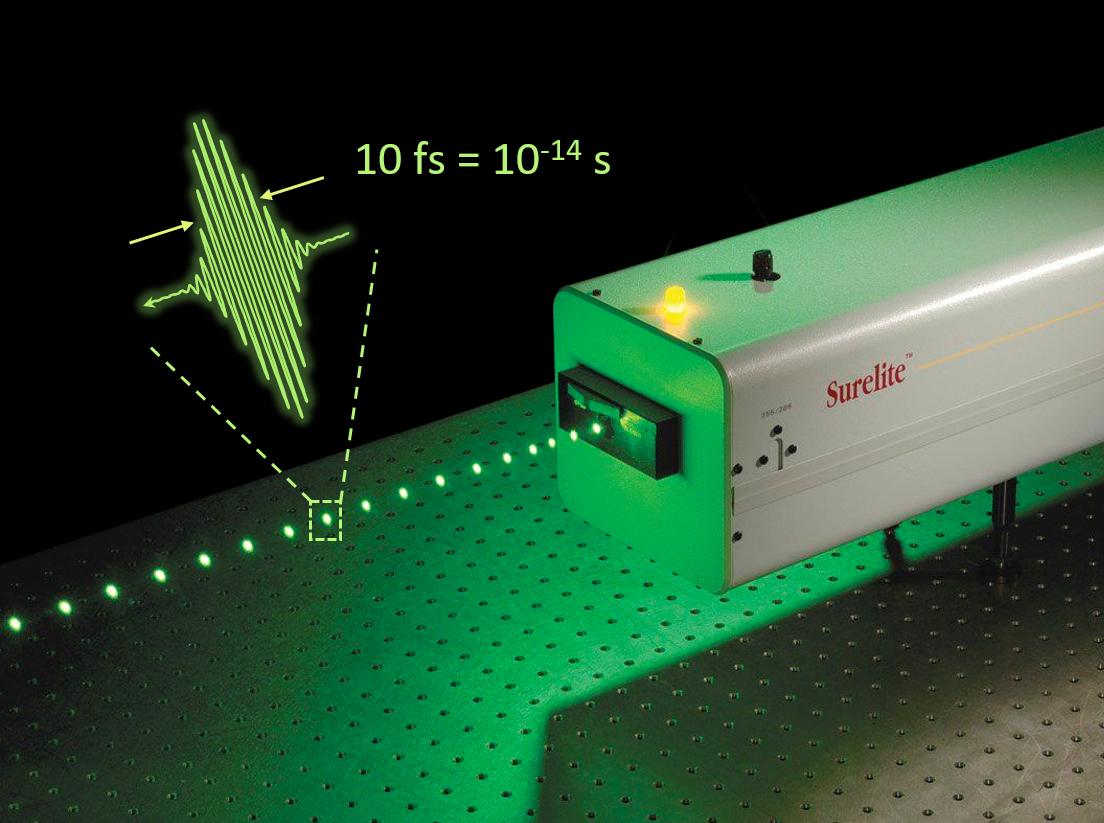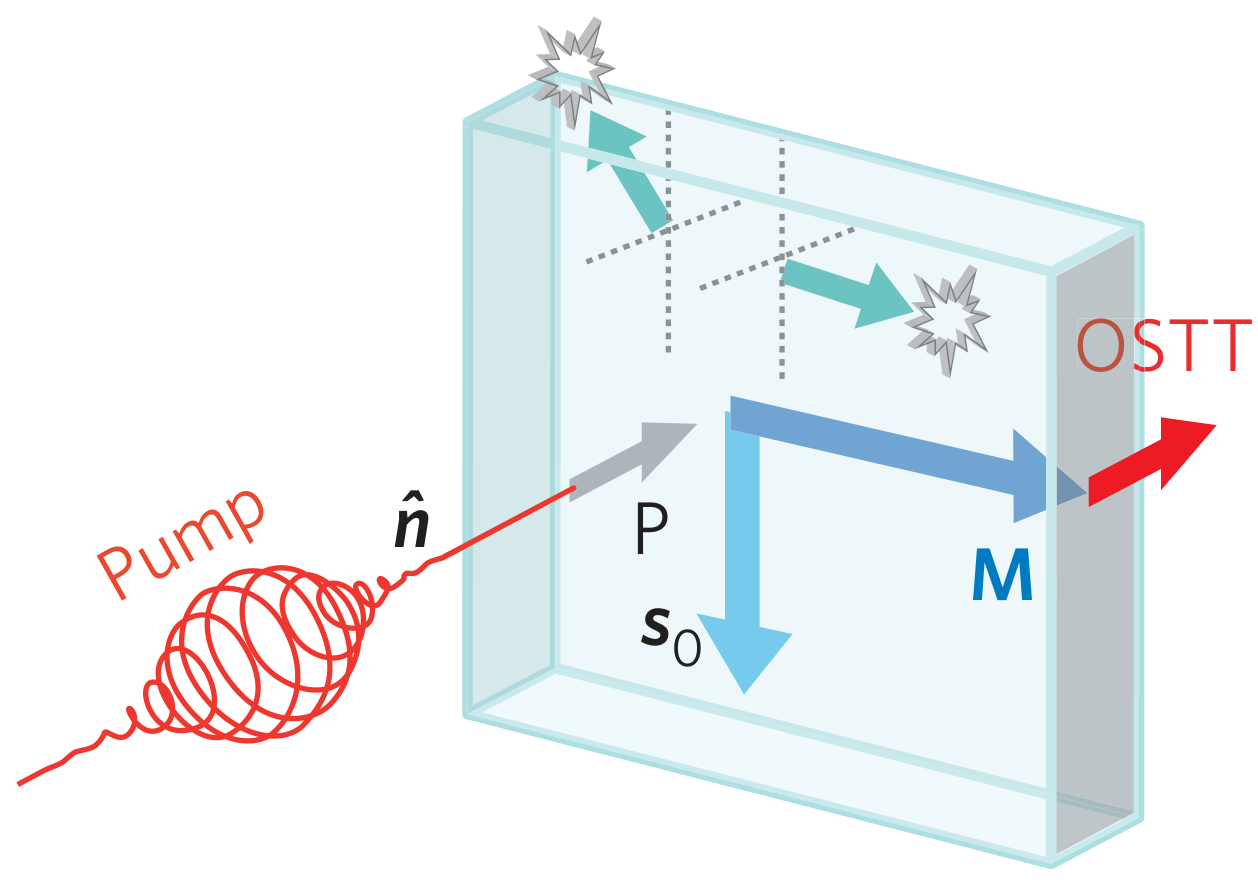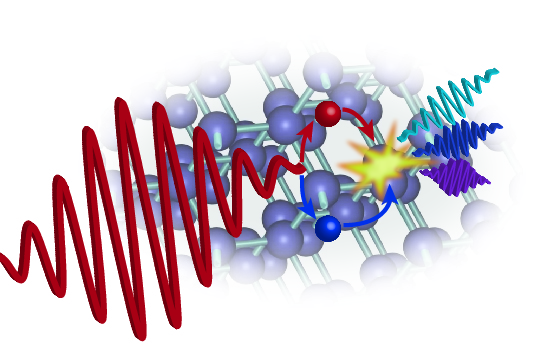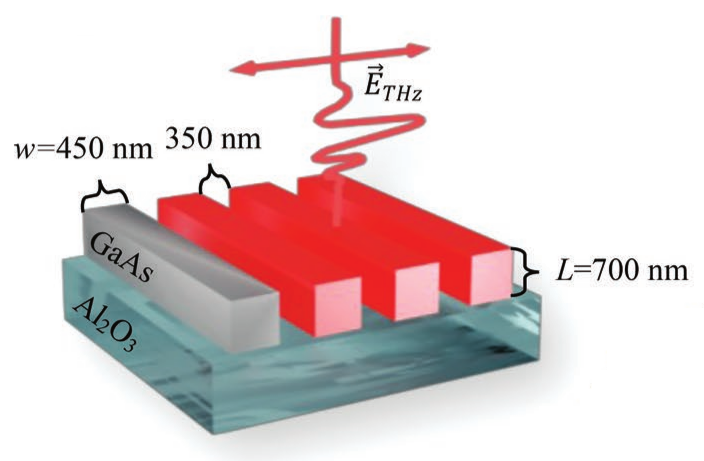Research topics
The research area of the department is ultrafast laser spectroscopy. Our main experimental tools are ultrashort laser pulses generated by pulsed lasers. These coherent radiation sources emit pulses of electromagnetic radiation with a length of less than 1 picosecond (10-12 s), in our case even shorter than 1 femtosecond (10-15 s). The length of these pulses then determines the temporal resolution with which we are able to study the behaviour of solids using these extremely fast flashes. Many of our experimental setups use an excitation and probing technique in which the material is first excited with an intense pulse and the phenomenon being studied is then detected with a weaker, time-delayed pulse.
The research is divided into three main thematic groups and their experimental facilities consist of six laser laboratories. The aim of our experimental and theoretical research is to gain insights into the dynamic behaviour of elementary excitations in a wide range of materials: from magnetically ordered metals to semiconductors and their nanostructures. The focus of the research is motivated by both fundamental knowledge and potential applications, which include the fields of spintronics, photonics and optoelectronics.

Optospintronics

Spintronics is a new, dynamically developing branch of electronics that uses the magnetic moment – spin – of charge carriers to store and process data. New technological concepts have been studied in spintronics since the early 1980s, and the first components have already found their commercial application (read heads for hard disks or magnetic memories of the „MRAM“ type). More recently, light has also been used in spintronics, giving rise to its new branch „optospintronics“. The use of the interaction of light with spin polarization provides us with new ways to non-invasively alter and study the magnetic ordering in materials on very short time scales (up to femtoseconds), which is several orders of magnitude faster than other existing experimental techniques.
Our research is grouped under the Laboratory of OptoSpintronics (LOS). Experiments using only optical pulses are carried out in the Laboratory of Optical Spintronics and are mainly focused on the study of mechanisms by which laser pulses can be used to change the orientation of magnetic moments in ferromagnetic and antiferromagnetic materials on ultrashort timescales. In the Terahertz Spintronics Laboratory we use terahertz pulses to generate and detect spin-polarized currents, which form the cornerstone of modern spintronics applications.
Ultrafast processes in solids
Currently, the speed of conventional electronics is limited by the maximum frequency at which macroscopic charge currents in materials can be controlled. However, there are physical processes occurring on much shorter time scales that could serve to increase the speed of information processing and transmission in the future. We are investigating these processes in our department using ultrashort laser pulses reaching field amplitudes comparable to those between atoms in solids. Because the electromagnetic field of the pulses and its phase can be controlled with a precision of a few tens of attoseconds (1 as = 10−18 s), this technology allows us to interact with and study the coherent dynamics of electrons in solids and nanostructures.
In the Laboratory with ultrashort pulses and the High Energy Femtosecond Laboratory we focus on the coherent interaction of electrons in semiconductor structures with femto- and attosecond laser pulses over a wide spectral range. The Ultrafast Electron Microscopy Laboratory is used to investigate high temporal and spatial resolution imaging.

Theory of Optics of Materials

Ultrafast phenomena in materials result from interaction between many sub-systems (electrons, holes, photons, kinetics of atomic nuclei, electron spin oscillations, …), which form a very complex interacting system, whose decription we aim at. We seek key microscopic interactions which determine the material response to external stimuli; we are then able to develop simplified models, suitable for fast predictions of the behavior of similar materials. Theoretical analysis also allows one to design an experiment in which we measure selected microscopic properties of a class of substances or even to design a prototype of an electronic/optical component. Last but not least, the theory is helpful in the analysis of experimental data, for example by numerically solving kinetic equations with given initial conditions. In the theory group, we focus on the description of phenomena caused by the interaction between the electromagnetic field and electron system.


